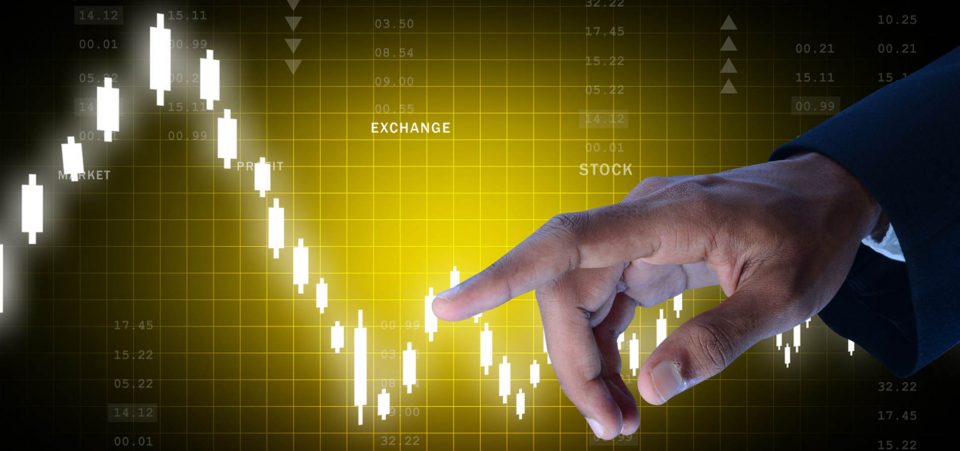Saxo Believes Plunging 10-Year Yields Will Signal Death of Economic Growth
Economic growth will be dead by the end of 2018, according to Saxo Bank Chief Economist Steen Jakobsen. He projects that the benchmark 10-Year Treasury note will yield zero percent by next year’s end, essentially meaning that growth is finished. Either a recession or a zero-growth Japanese scenario follows. Both environments will be horrible for stocks.
While the Federal Reserve keeps pushing the meme that inflation is just around the corner, fueled by a tight labor market’s effect on wages, Jakobsen sees the opposite. His core thesis is that deflationary signs are actually everywhere. There’s demographic deflation (aging society, declining productivity); technological deflation (electronics keep getting cheaper); energy deflation (crude oil since 2014); and a massive debt mountain, which is supremely deflationary (drag on future demand). (Source: “10-Year Treasury Yields Headed to Zero Percent” Saxo Bank CIO,” MishTalk, September 7, 2017.)
Also Read: 5 Signs of a U.S. Economic Collapse in 2017
The thing is, the market isn’t pricing in that possibility yet. Despite historically low unemployment, inflation still hasn’t happened. Yet, Fed Chair Janet Yellen continues to spout platitudes that inflation (and by extension, growth) is right around the corner. And the stock market, ever so desperate to cling to a bullish narrative, keeps lapping it up.
But Jakobsen thinks the Fed’s models have it all wrong. The Fed places heavy emphasis on the “Phillips Curve,” which links an inverse relationship between the level of unemployment and inflation rate. This model may have worked before, but technology is a game changer.
Now, million-square-foot manufacturing plants can employ as little as 30 people, which stifles labor demand. Sure, the unemployment rate is low. But when 80% to 90% of jobs are service sector positions, part-time, and/or transitory, wage growth becomes non-existent. Unless you’re a CEO or in upper management, your wages have not kept up with inflation since the late 1990s.
But Didn’t U.S. Economic Growth Reach 3%?
On August 30, the Commerce Department revised U.S. GDP growth upwards to three percent—a two-year high. The S&P 500 predictably took off, culminating in a move that would take it to just under new all-time highs a couple days later. It appeared that the majority of investors believed that, finally, growth velocity was increasing. Even if it was about five years too late.
But, if we examine the evidence, does it make any sense? Is it believable that growth starts ramping up now, post-peak of the third-longest post-WWII expansion ever? What’s changed in the consumption profile of a nation that’s as divided as ever? Has consumer debt come down, or interest rates—or have wages shot up beyond what the numbers indicate? Besides a persistently weakening U.S. dollar (exporter-friendly), none of that has happened.
What’s actually happening is that the blindingly optimistic GDP numbers are one of several lagging indicators. They probably reflect the true nature of growth six months ago—not today.
The true driver of growth—the global credit impulse—tells a different story. According to Jakobsen, Saxo’s credit impulse model shows that credit peaked in Q4 2016 and that there will be a high probability of a serious global growth slowdown nine to 12 months later. If correct, growth should start decelerating from October 2017 to March 2018. (Source: Ibid.)
As we’ve said time and again on Lombardi Letter, slowing (or negative) credit growth equals U.S. recession. To not believe this would be to believe that most consumers and businesses use savings to subsidize spending purchases. And we all know, that doesn’t happen. Almost everyone has high levels of credit card, mortgage, car, and student loan debt. Only low interest rates are keeping the economy together and, even then, saturation is kicking in.
If investors think the stock market can keep running during a negative credit impulse, think again. No amount of central bank liquidity-propping can negate the financial status of a consumer who’s tapped out. U.S. consumers account for nearly 70% of all consumer spending. Stocks are valued at the second- or third-highest (depending on metric) levels on record. If earnings start tanking, central banks can only cushion a harrowing fall.
In the end, Saxo Bank’s chief economist is not buying economic growth predictions and neither am I. If 10-year Treasuries yield anywhere close to zero percent, it means that expectations of inflation are nil. Ultimately, it will signal that deflationary forces are winning out. As a bonus, we’ll have trillions of dollars of surplus debt to work off without the benefit of inflation. The debt overhang will look more like King Kong than Donkey Kong.
This screams out “Japan scenario” to me. An environment where growth is non-existent, interest rates are nothing, and central bank intervention stretches are far as the eye can see. Free markets, for all intent and purposes, would be finished.
Take a look at the chart above to see how well that played out for the Japanese stock market. The dynamics are a little different, but the underlying factors rhyme.







